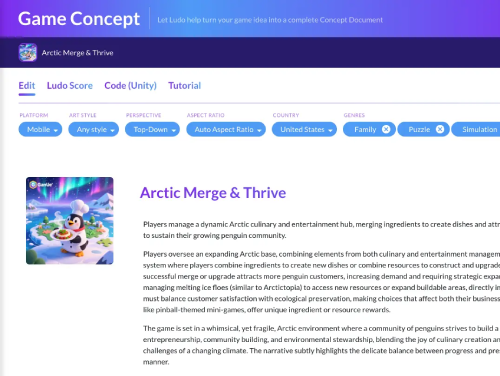
This is the first blog in Ludo’s guide to great brainstorms. With Ludo, you can let your creative juices flow and come up with amazing ideas. Plus, with our new collaborative features you can easily work with your teams. While using the Ludo creative platform you might even want to run a virtual brainstorm.
Here are a few tips from our creative experts about laying the foundations for a great brainstorm.
Step 1: Create the best environment for a great brainstorming session
When you begin to brainstorm an idea you need to make sure you are situated in the right environment. Picture this. You are stuck for an idea. In a small dark room with no direction and no way of moving forward with a concept. How can you help move that process along? It’s hard, right?
Picking the right environment to brainstorm could be the difference between a revolutionary game vs. an idea that is outdated, overplayed, and basic.
Being able to generate an innovative fresh idea can be blocked by something as simple as your own four walls. In the wrong environment, how can you develop and create an inspirational idea full of joy and excitement?
So before you begin, make sure that you are in a place. Somewhere you can think freely, feel enlightened, and have all the resources you need to hand. In the remote working environment you may want to go somewhere new. Rather than sticking to the usual place where you hold your Zoom, Teams or Skype calls, try a new location. Or maybe even brighten up your background with something fun and different. The main question is: have you set the scene correctly?
Step 2: Arrange the right time for everyone during your preparation for the brainstorm
The time that you choose to have a brainstorm is very important. The energy that your team has at that moment in time is crucial to a successful session.
Friday afternoon is a prime example of when you shouldn’t hold a brainstorming session. All team members involved could be more excited by what they are planning for the weekend or for that evening.
The time you pick is crucial. You want your team to be well-nourished, well-hydrated, and totally up for the task. Consider time zones as well if you are working with teams across different locations.
Step 3: Preparation is everything, so be sure to assign roles in the team before the brainstorming session
When it comes to being comfortable in a brainstorm, everyone needs to know what their role is in the exercise. Within a brainstorming session, it is a good idea to set roles before the session starts. This brings many benefits. For example, you can balance personalities within the group. There may be a risk of your more extroverted team members dominating the session and preventing others from contributing.
If everyone has a role within the group, they are more motivated and enthusiastic about putting their findings and opinions forward. When you brief your team, tell them who will be writing down the ideas and who will be leading on which topics. This is especially useful if you need them to do some research in advance.
Step 4: Plan your rewards for those with great brainstorm ideas
Injecting a bit of competition into the task can make the session fun and engaging. A lot of people resent brainstorms because they see their ideas taken and no recognition given. Think of a simple prize or reward for the best idea, and make it democratic by calling a vote at the end of the session. The prize can be as basic as a star chart or something as literal as a small financial reward!
Step 5: Communicate the brief and the rules of the brainstorm
The brief is very important. When people know the point of the brainstorm, they will arrive motivated and keen to contribute. Consider what they need to prepare in advance, and what the reward will be.
You will have heard the saying no idea is a bad idea. We all know this is a bit of a misconception. However, the intention behind the saying is not. Some very odd, off-the-wall ideas have been known to fly. So be sure to let everyone know that even if they think an idea is terrible, suggest it anyway! It might ultimately be discounted, but the more ideas that end up on the table, the better.
When you call a brainstorm, make sure everyone knows their roles and the rules of the road. Be very clear with what you expect and what the goals of the brainstorm are. If you are working with remote teams, communicate these rules ahead of time to ensure they are ready and comfortable.
Step 6: Inspiration for the brainstorming session
Finding stimulus can be very difficult, but once you do, it is a goldmine of inspiration. That kind of inspiration can come from anyone, and from anywhere. That may be from your team, your surroundings, or with Ludo! Ludo is there to set off a firework of inspiration, which can take a mediocre idea to the next level. Ludo can show you millions of images and top trends in the games industry. This can help you produce the next hit game.
Our next blog will take you through running the best brainstorm. It will explore how to dig down to the kernels of a great idea. See you soon!




